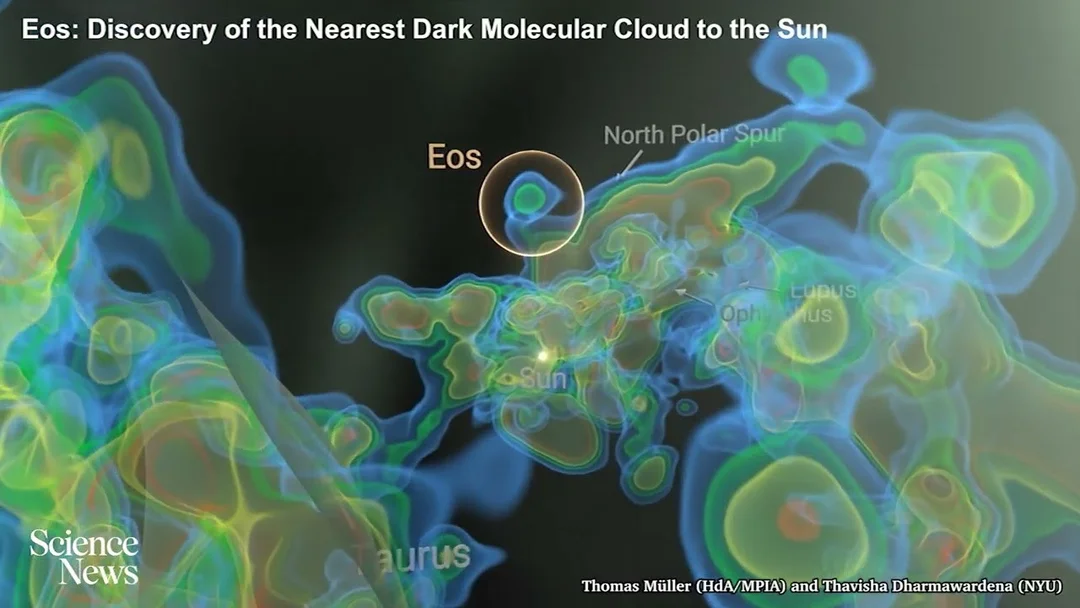
Eos: Gigantic, Glowing Molecular Cloud Discovered Lurking Near Earth – A Cosmic Revelation
In a stunning discovery, astronomers have identified a massive molecular cloud, dubbed Eos, lurking just 300 light-years from Earth. This gigantic structure, named after the Greek goddess of dawn, had remained hidden until now due to its low carbon monoxide content, a challenge to traditional detection methods. The revelation of Eos is reshaping our understanding of the cosmic recycling of matter that fuels star and planet formation, marking a significant milestone in astronomical research.
Eos, primarily composed of hydrogen gas, spans approximately 100 light-years and is crescent-shaped. To put its size into perspective, its width is equal to about 40 Earth moons lined up. That's massive! Blakesley Burkhart, an associate professor at Rutgers University, led the team that made this breakthrough. Their novel method detected Eos through the fluorescent glow of hydrogen molecules, a technique that promises to uncover many more CO-dark clouds.

“This is the first-ever molecular cloud discovered by looking for far-ultraviolet emission of molecular hydrogen directly,” said Burkhart. “The data showed glowing hydrogen molecules detected via fluorescence in the far ultraviolet.” This cloud, she added, is “literally glowing in the dark.”
Molecular hydrogen is the most abundant substance in the universe, playing a critical role in star and planet formation. By studying hydrogen-filled clouds like Eos, astronomers can better gauge the amount of material available for these processes. This discovery provides a unique opportunity to observe the cosmic recycling of matter up close. As hydrogen in these clouds collapses under gravity, it can form stars and planetary systems.
The cloud's distinctive crescent shape is influenced by its interaction with the North Polar Spur, a vast region of ionized gas. This interaction offers insights into the forces that sculpt molecular clouds. Simulations suggest that Eos may evaporate in about 6 million years, highlighting the transient nature of such cosmic phenomena.

Building on this discovery, Burkhart and her colleagues are developing a mission concept for a NASA spacecraft named after Eos. The proposed Eos space telescope would observe in far-ultraviolet wavelengths to measure molecular hydrogen content across the Milky Way, offering new insights into the galaxy's evolution. But its proximity, huge size and structure are really the standout discoveries.

Eos weighs in at 3,400 times the mass of the Sun. This interstellar gas and cosmic dust is some of the oldest matter in existence dating all the way back to The Big Bang. Its discovery has opened a fresh window into , right at the edge of our local space environment.
The discovery of Eos underscores the vastness and complexity of the universe. What other hidden wonders await our discovery, and how will they reshape our understanding of the cosmos? Share your thoughts and theories in the comments below!